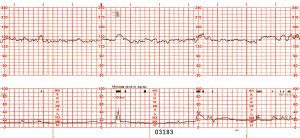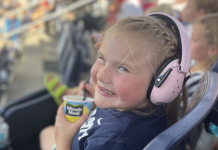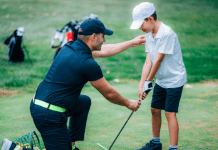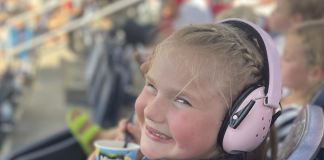(Note: This is the second post in our series dedicated to Prematurity Awareness Day; to read the other posts in this series, click here.)
During our routine twenty-week sonogram with our first pregnancy, we learned that we were expecting twins. This revelation meant the end of a “normal” and the beginning of a “high risk” pregnancy which led to more frequent appointments, sonograms, and soon included nonstress tests (NSTs). Generally speaking, undergoing this categorical change meant more monitoring all around.
During one of my NSTs, I was watching the print out (similar to the one pictured here) and observed some spikes on the graph. Deciding that I had nothing better to do, I asked what the spikes meant; to my surprise, I was informed that they were contractions. Yes, I had to be told that I was having contractions. (I realize that this might seem really obvious, but I was already in such a state of uncomfortable that those contractions didn’t seem to phase me.)
Twelve weeks after our change in status, I went into preterm labor. After staying overnight at Liberty Hospital (pre-Birthing Center), I was discharged and prescribed medications designed to suppress contractions. “Limited activity bed rest” also became a part of my life – not that I really felt like doing much at thirty-two weeks pregnant, it just meant that I wasn’t supposed to anymore. What did this look like for me? I could fold laundry, but I wasn’t supposed to carry it up and down the stairs. I could put groceries away, but not shop for them. I could leave the house, but only if it meant not doing much activity while I was out.
Two weeks later, we were at a wedding reception when I found myself timing the frequency of those uncomfortable pains I now recognized as contractions. I ended up staying overnight at Liberty Hospital, then being put on strict bed rest upon my discharge from the hospital. Showers became limited in frequency to once or twice a week for a maximum of five minutes each. Looking back, it is somewhat regrettable that these were my last few weeks before children and I had already made the transition to short and infrequent showers 🙁 Also, if I wanted to be in the living room, I had to be laying on my side on the couch.
At thirty-six weeks, while adhering to my strict bed rest, my water broke. At this point, there wasn’t anything left but to just have these babies. After a relatively short labor, we welcomed two baby girls into our world. The girls had a six day hospital stay that included time in an oxygen tent, an incubator, and under a bili light. Liberty Hospital allowed me to board there after I was discharged, which gave me the opportunity to be close enough to visit and nurse our new bundles as often as possible. The boarding program that Liberty Hospital offers is amazing; I hadn’t heard of anything else quite like it before.
Our girls had trouble regulating their body temperatures and also had difficulty latching on. Later, we dealt with projectile vomiting that was eventually diagnosed as acid reflux. Aside from dressing them in an extra layer and hat, supplementing breast milk with higher caloric formula, and treating the acid reflux with positioning and medication, we didn’t have a terribly different newborn story – but it was our story. While I may tire of mentioning that they were born early and hospitalized at every new doctor appointment they have, given what it could mean, I am grateful for their journey and for the healthy girls we have as a result of that journey.
(Note: You can read more about the circumstances surrounding the birth of Sarah’s twins, along with the support their family has received from the Down Syndrome Guild (DSG) of Greater Kansas City, in a previous post on our blog by clicking here.)















